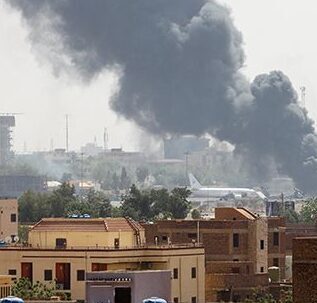More so, a growing proportion of these people are located in environments that can be characterised as ‘insecure’ – Yemen, Myanmar, Syria and Ethiopia. Insecurity can be caused by complex emergencies, protracted humanitarian crises, disputed legitimacy claims, communal and/or state violence, instability or the breakdown of state structures.
It’s not just that the need is greater than ever before, but the degree of difficulty involved in actually reaching those people and delivering aid is increasingly difficult. Numerous factors can undermine humanitarian assistance access, such as the politicisation of aid in conflict settings, sanctions, geographic constraints or the breakdown of states.
But there are ways in which Australia can improve the efficiency of its humanitarian programs to reach those most in need.
How?
To answer that, let’s first take a step back and look at the wider picture of how Australia has been delivering humanitarian assistance over the last ten years.
In recent years Australia’s humanitarian assistance – including assistance for people in insecure environments – has been delivered mostly through UN agencies and pooled funding. In 2021, 59% of Australia’s total funding was delivered through the UN and other multilateral channels. We also see that as a proportion of Australia’s total Humanitarian Assistance, funding for NGO’s remains steady at around 20% of the Humanitarian Budget since 2018. There is additional funding that flows to NGO’s as partners of commercial suppliers such as managing contractors and multilateral organisations that is not reflected in this percentage.

(Source: Department of Foreign Affairs & Trade Official Development Assistance (ODA) Statistical Summaries 2014-2015, 2015-2016, 2016-2017, 2017-18, 2018-2019, 2019-2020, 2020-21 and 2021-2022)
While the UN and multilateral organisations do play a vital role in coordinating and enabling humanitarian assistance, particularly through the ‘cluster system’, they cannot alone be relied on to effectively deliver humanitarian assistance in any given context. In fact, as stated above, they rely on partnerships with other stakeholders including NGOs to implement their work. A global humanitarian system that does not equally empower and directly fund NGOs and local civil society organisations is poorer in its ability to be locally led, inclusive and accountable to communities which is important because locally led initiatives are shown to be more effective and better meet affected communities needs following disaster.
What is the value add of NGOs?
At the 2016 World Humanitarian Summit, the United Nations Secretary-General called for humanitarian action to be “as local as possible, as international as necessary”. Local organisations at the community level are better able to identify and address community needs including those of marginalised and vulnerable communities; and Australian NGOs and humanitarian agencies can support their efforts.
Ideally, humanitarian funding should be going directly to local organisations on the ground, but NGOs based in Australia with strong local networks and locally led ways of working can play a role as intermediary. This may involve contextualising the donor’s requirements and priorities and supporting local partners to meet them, providing technical support, and working in partnership. Funding these types of organisations directly, rather than through multilateral organisations, fundamentally means more efficient delivery with more of every dollar reaching people in need; demonstrated effectiveness based on experience; and equity in long-standing relationships that enable locally led responses.
I ‘ve opted to break these down into what I’m terming the three Es: efficiency, efficacy and equity.
Efficiency
Efficient delivery means more of every dollar reaches people in need.
Many multilateral organisations sub-contract NGOs – both international and local – to deliver their programs. For example, three-quarters of the World Food Programme’s food and cash-based transfer operations are delivered together with NGOs. Such subcontracting arrangements can slow down the process of funds reaching people in need and reduce the direct funding available due to the overhead fees of implementing agencies. Tracking humanitarian funding flows is a challenge, but a 2013 study found that donor funding allocated through the UN Central Emergency Response Fund incurred an estimated 10 percent in overhead fees before it reached implementing NGO partners.
Direct funding also strengthens Australia’s ability to report against its priorities (e.g., gender equality and disability inclusion) and demonstrate value for money and impact. For example, the Australian Government’s Mid-Term Review of the Regional Humanitarian Strategy for Afghanistan and Pakistan – which predominantly funds UN agencies to work with local partners – found that the program’s performance assessment framework was unable to be utilised, in part, because multilateral partners were not obliged to report against its indicators.
Effectiveness
Effectiveness comes with experience.
Humanitarian agencies have consistently shown that they are timely, effective, experienced and accountable partners in insecure contexts. The Australian Humanitarian Partnership (AHP), a multi-year partnership between DFAT and Australian NGOs, has successfully delivered assistance in a wide range of politically sensitive and operationally challenging environments, including Lebanon, Iraq, Jordan, Bangladesh and Myanmar. A 2021 review found that, “AHP has been a highly effective mechanism to enable Australia to address the needs of affected populations in rapid and slow onset disasters”.
There have been other accolades for how humanitarian agencies are effective.
The Australian Government’s Independent Evaluation of the Syria Crisis Humanitarian and Resilience Package indicated that projects with direct contracting or strong involvement of national partners were on track to achieve “impressive results” – including increased organisational capacity for partners and increased potential to attract further funding. Dedicated and stable support staffing at posts and in Canberra resulted in Australia being seen as an influential and valued donor. The 2018 Office for Development Effectiveness (ODE) report on the ‘development for all’ strategy evaluated the performance of implementing partners in recent humanitarian responses for disability inclusiveness, finding that NGO partners performed “markedly better than other implementing partners”.
Equity
Equity in long standing relationships enable locally led responses. Local organisations at the community level are better able to identify and address community needs including those of marginalised and vulnerable communities; and Australian NGOs and humanitarian agencies can support their efforts.
An example of how locally led responses can have better impact is the 2018 PNG Church Partners Joint Earthquake Response. Delivered through the AHP, this placed Papua New Guinean civil society organisations at the centre of operational decisions around the response. They mobilised their networks to undertake needs assessments. Rapid response funds were transferred immediately to support the response and, for the first time, the response was co-funded and multi-lateral.
Managing risk
Of course, there are risks that come with partnering with any type of humanitarian organisation, multilateral, NGO or local, and in each context the risks are unique.
One that is often cited is the risk to Australian NGO aid workers who travel to insecure environments. However, post COVID, funding Australian NGOs that work in a locally led way means that Australian-based staff do not necessarily need to travel to high-risk and insecure environments. Humanitarian response in these environments does, however, carry other risks associated with working in unpredictable and volatile settings, including financial, security, safety, legal/compliance, operational, reputational and ethical risks, but NGOs have robust frameworks to manage these risks and are partners for UN agencies so are part of the project risk profile regardless.
Many international NGOs have adopted a more holistic enterprise risk management model which considers the negative flow-on effects of simply transferring risk downward to implementing partners. In this context, DFAT could consider different types of risk and whether risk – rather than simply being transferred – can be shared and managed through joint approaches with partners. It could pursue this approach through long-term, flexible and multi-year partnerships with NGO and civil society partners that focus less on risk transfer and more on risk management and mitigation through joint diagnostics, treatments and two-way capacity building.
These types of funding arrangements will increase program efficiency and effectiveness and give Australia greater influence over the outcomes it wants to achieve through its development and humanitarian program. Funding local partners, and the NGOs and humanitarian agencies that work with them, is therefore a critical modality in Australia’s toolkit to respond to humanitarian need in insecure environments.
Additionally, there many more mechanisms Australia can use to increase humanitarian effectiveness and access. For example, the Australian Government should restore a strong, stand-alone and whole-of-government humanitarian strategy that builds upon the previous strategy to strengthen our ability to prepare, respond and recover when it comes to crises. But the new strategy must also go further than this to meet the challenges of the future. It needs to effectively prevent suffering and progress important development priorities such as gender equality, climate adaptation and peace. Additionally, as we see an increase in natural disasters in our region due to climate change, it is essential that humanitarian principles and strategies be used in defence responses. This includes greater collaboration across military, humanitarian and police sectors within disaster settings.
The scope and profile of humanitarian need has changed immensely due to climate change, conflict and COVID-19. Australia must realign its approach in order to effectively address pressing humanitarian demand globally.
Further Information:
Catch Episode 8 of Reimagining Development, a podcast jointly hosted by ACFID and Good Will Hunters. In this episode, ACFID’s Humanitarian Policy and Advocacy Advisor, Natasha Chabbra, discusses the global changes to the landscape, and what Australia must do to ensure it delivers for the people in greatest need.
Read the Humanitarian Reference Group’s (HRG) Humanitarian Submission to the New Development Policy 2022.
Read Same Space- Different Mandates, a collaboration with ACFID and the Australian-Civil Military Centre [ACMC] which aims to improve the collective understanding of civil, military and police stakeholders responding to international disasters and complex emergencies.

Natasha Chabbra
Natasha is the Humanitarian Policy and Advocacy Lead at ACFID.









